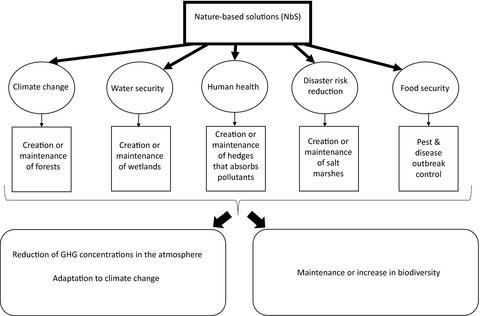当前位置:
X-MOL 学术
›
J. Appl. Ecol.
›
论文详情
Our official English website, www.x-mol.net, welcomes your feedback! (Note: you will need to create a separate account there.)
Time to integrate global climate change and biodiversity science-policy agendas
Journal of Applied Ecology ( IF 5.7 ) Pub Date : 2021-09-21 , DOI: 10.1111/1365-2664.13985 Nathalie Pettorelli 1 , Nicholas A. J. Graham 2 , Nathalie Seddon 3 , Mercedes Maria da Cunha Bustamante 4 , Matthew J. Lowton 5 , William J. Sutherland 6, 7 , Heather J. Koldewey 5, 8 , Honor C. Prentice 9 , Jos Barlow 2
中文翻译:

整合全球气候变化和生物多样性科学政策议程的时候到了
更新日期:2021-11-12
Journal of Applied Ecology ( IF 5.7 ) Pub Date : 2021-09-21 , DOI: 10.1111/1365-2664.13985 Nathalie Pettorelli 1 , Nicholas A. J. Graham 2 , Nathalie Seddon 3 , Mercedes Maria da Cunha Bustamante 4 , Matthew J. Lowton 5 , William J. Sutherland 6, 7 , Heather J. Koldewey 5, 8 , Honor C. Prentice 9 , Jos Barlow 2
Affiliation

|
- There is an increasing recognition that, although the climate change and biodiversity crises are fundamentally connected, they have been primarily addressed independently and a more integrated global approach is essential to tackle these two global challenges.
- Nature-based Solutions (NbS) are hailed as a pathway for promoting synergies between the climate change and biodiversity agendas. There are, however, uncertainties and difficulties associated with the implementation of NbS, while the evidence regarding their benefits for biodiversity remains limited.
- We identify five key research areas where incomplete or poor information hinders the development of integrated biodiversity and climate solutions. These relate to refining our understanding of how climate change mitigation and adaptation approaches benefit biodiversity conservation; enhancing our ability to track and predict ecosystems on the move and/or facing collapse; improving our capacity to predict the impacts of climate change on the effectiveness of NbS; developing solutions that match the temporal, spatial and functional scale of the challenges; and developing a comprehensive and practical framework for assessing, and mitigating against, the risks posed by the implementation of NbS.
- Policy implications. The Conference of the Parties (COP) for the United Nations Framework Convention on Climate Change (COP26) and the Convention on Biological Diversity (COP15) present a clear policy window for developing coherent policy frameworks that align targets across the nexus of biodiversity and climate change. This window should (a) address the substantial and chronic underfunding of global biodiversity conservation, (b) remove financial incentives that negatively impact biodiversity and/or climate change, (c) develop higher levels of integration between the biodiversity and climate change agendas, (d) agree on a monitoring framework that enables the standardised quantification and comparison of biodiversity gains associated with NbS across ecosystems and over time and (e) rethink environmental legislation to better support biodiversity conservation in times of rapid climatic change.
中文翻译:

整合全球气候变化和生物多样性科学政策议程的时候到了
- 人们越来越认识到,尽管气候变化和生物多样性危机在根本上是相互关联的,但它们主要是独立解决的,因此应对这两个全球性挑战必须采用更加综合的全球方法。
- 基于自然的解决方案 (NbS) 被誉为促进气候变化与生物多样性议程之间协同作用的途径。然而,NbS 的实施存在不确定性和困难,而关于它们对生物多样性的益处的证据仍然有限。
- 我们确定了五个关键研究领域,其中不完整或信息不足阻碍了综合生物多样性和气候解决方案的发展。这些与完善我们对减缓和适应气候变化方法如何有益于生物多样性保护的理解有关;增强我们跟踪和预测移动中和/或面临崩溃的生态系统的能力;提高我们预测气候变化对 NbS 有效性影响的能力;开发与挑战的时间、空间和功能规模相匹配的解决方案;制定全面实用的框架,以评估和减轻实施 NbS 带来的风险。
- 政策影响. 联合国气候变化框架公约 (COP26) 和生物多样性公约 (COP15) 的缔约方会议 (COP) 为制定协调一致的政策框架提供了明确的政策窗口,以协调生物多样性和气候变化关系中的目标. 该窗口应 (a) 解决全球生物多样性保护长期长期资金不足的问题,(b) 取消对生物多样性和/或气候变化产生负面影响的财政激励措施,(c) 在生物多样性和气候变化议程之间建立更高水平的整合,



























 京公网安备 11010802027423号
京公网安备 11010802027423号